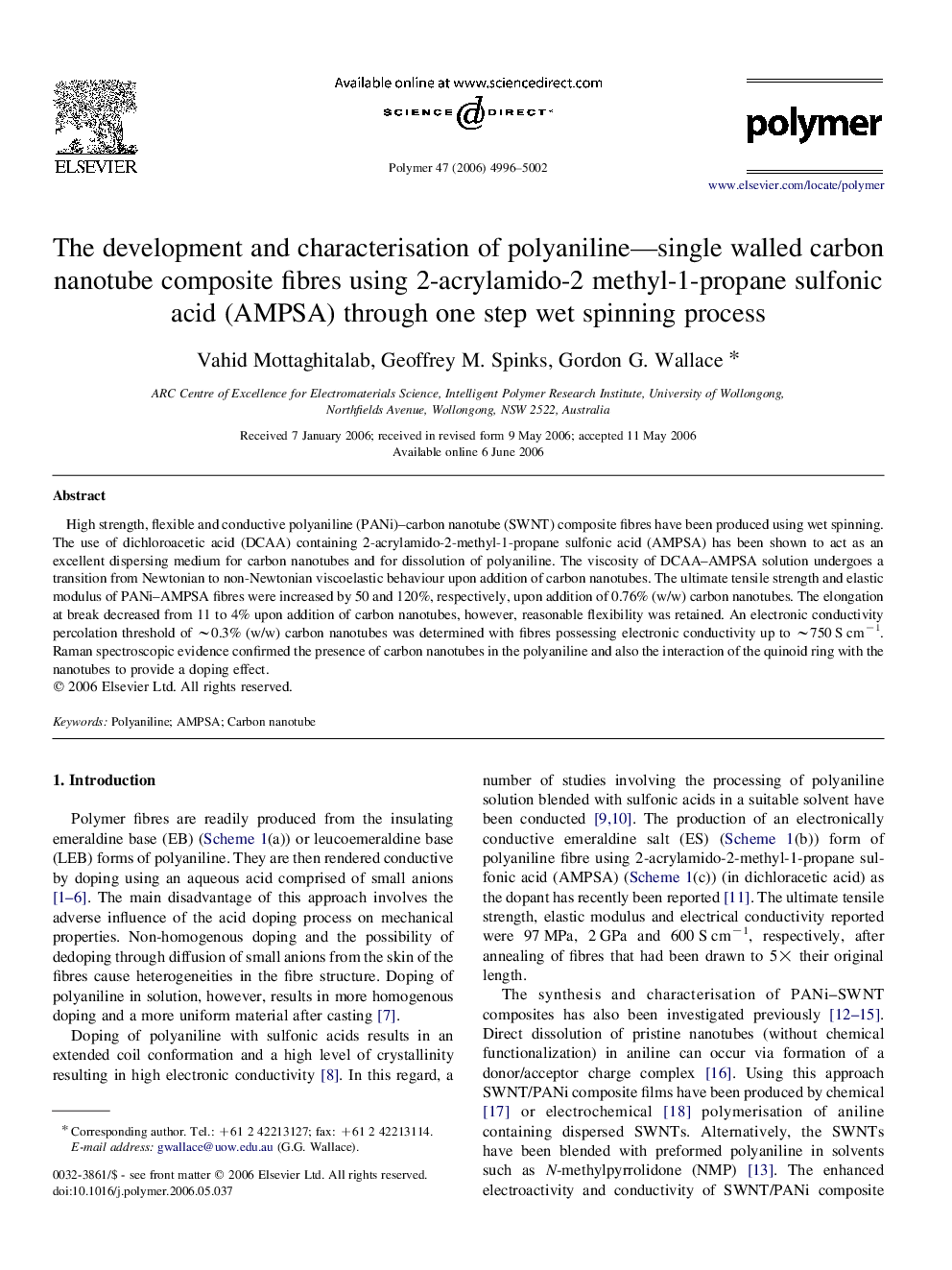| Article ID | Journal | Published Year | Pages | File Type |
|---|---|---|---|---|
| 5189366 | Polymer | 2006 | 7 Pages |
Abstract
High strength, flexible and conductive polyaniline (PANi)-carbon nanotube (SWNT) composite fibres have been produced using wet spinning. The use of dichloroacetic acid (DCAA) containing 2-acrylamido-2-methyl-1-propane sulfonic acid (AMPSA) has been shown to act as an excellent dispersing medium for carbon nanotubes and for dissolution of polyaniline. The viscosity of DCAA-AMPSA solution undergoes a transition from Newtonian to non-Newtonian viscoelastic behaviour upon addition of carbon nanotubes. The ultimate tensile strength and elastic modulus of PANi-AMPSA fibres were increased by 50 and 120%, respectively, upon addition of 0.76% (w/w) carbon nanotubes. The elongation at break decreased from 11 to 4% upon addition of carbon nanotubes, however, reasonable flexibility was retained. An electronic conductivity percolation threshold of â¼0.3% (w/w) carbon nanotubes was determined with fibres possessing electronic conductivity up to â¼750Â SÂ cmâ1. Raman spectroscopic evidence confirmed the presence of carbon nanotubes in the polyaniline and also the interaction of the quinoid ring with the nanotubes to provide a doping effect.
Keywords
Related Topics
Physical Sciences and Engineering
Chemistry
Organic Chemistry
Authors
Vahid Mottaghitalab, Geoffrey M. Spinks, Gordon G. Wallace,
